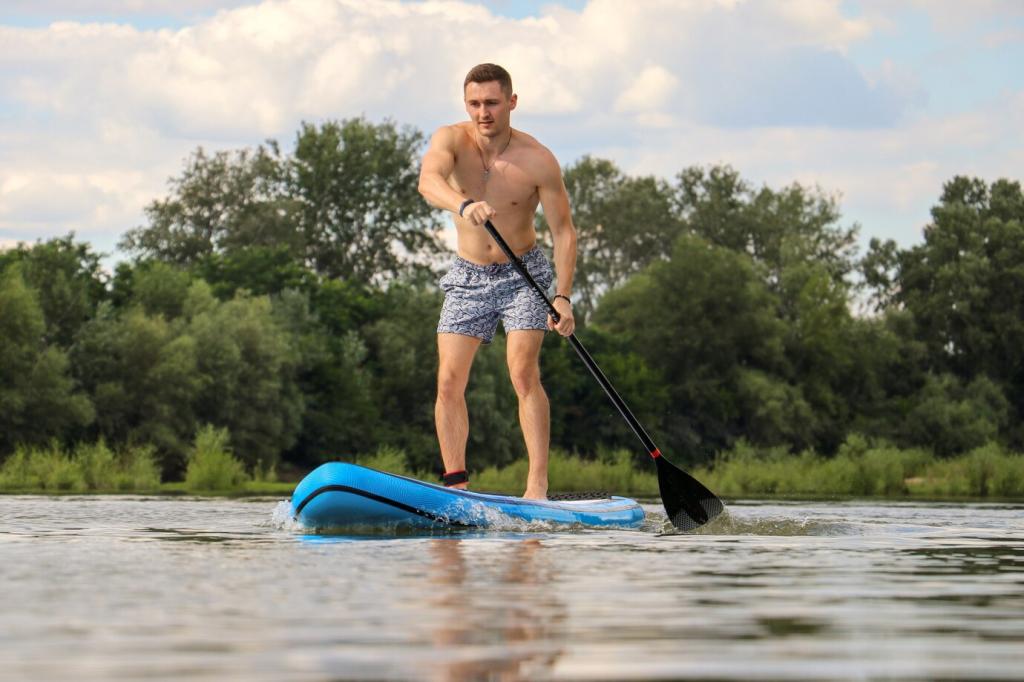Start Paddling: Canoeing Routes and Maps for Beginners
Chosen theme: Canoeing Routes and Maps for Beginners. Dive into easy route planning, simple map-reading skills, and confidence-building tips for your very first strokes. Ask questions as you go, share your progress, and subscribe for weekly beginner-friendly route ideas you can paddle this weekend.
Getting Oriented: Your First Beginner Route and Map
Choosing Your First Route
Pick calm, sheltered water with easy access and minimal boat traffic. Aim for a short loop or out-and-back route under two hours, hugging the shoreline. Avoid portages at first. Mark rest spots on your map, and invite a friend to join. Share your planned distance in the comments.
Reading Basic Canoe Maps
Focus on the legend, scale bar, and north arrow. Identify launch points, beaches, hazards, and simple landmarks like bridges or piers. Trace your route slowly with a finger, noting turns and protected coves. Take a photo of the map for backup. Ask if any symbols confuse you.
Safety and Weather on the Map
Check wind direction against open water fetch and choose sheltered shorelines. Circle bailout beaches and docks. Note shaded picnic spots for hot days. Add distances between landmarks to pace breaks. Screenshot the forecast and tide or flow info. Tell us your plan; we can sanity-check it together.
Essential Map Skills for Confident Beginners
Campsites, launches, rapids, and portages appear as specific icons. Learn your area’s symbol set and keep the legend visible. Highlight hazards and no-wake zones. If the map shows contour-like shoreline details, choose routes that tuck behind points for shelter. Share a photo of any unclear icon for help.

Calm Lakes and Shoreline Loops
Choose a lake with a protected shoreline. Paddle a simple loop that never strays far from landings. Early mornings are calmer and quieter. On my first loop, I traced the bays like puzzle pieces and returned grinning, dry, and hungry for more. Share your nearest lake; we’ll help sketch a loop.
Slow Rivers and Friendly Meanders
Look for Class I current with clear access points, wide bends, and visible eddies. Check for strainers on satellite imagery. Plan a short shuttle or pick an out-and-back. We once drifted past herons for an hour, barely paddling, just reading the banks ahead. Post your river name for route ideas.
Urban Waterways with Easy Access
City canals and park lagoons often have posted maps, rentals, and nearby bathrooms. Plot a quiet early outing, then reward yourself with coffee at the take-out. Note bridges as landmarks and underpasses as wind breaks. If you have a favorite city launch, comment with parking tips for fellow beginners.
Planning a Smooth, Safe Day Trip
Pack PFDs, spare paddle, whistle, throw rope, repair tape, sunscreen, water, snacks, and a small first-aid kit. Mark refill spots, picnic beaches, and shaded rests right on your map. Put essentials in a dry bag. Comment with your checklist; we’ll suggest smart additions for your specific route.
Scout access points in person or with satellite imagery. Measure the gear carry from parking to water. Verify hours, fees, and restroom availability. Note landmarks you’ll recognize from water level. Write phone numbers for marinas or park offices on your map. Ask locals in the comments for current conditions.
Before launching, circle beaches, docks, and bridge ramps that offer safe exits. Add decision times to evaluate wind, fatigue, and daylight. Carry a simple signal plan with your paddling partner. Print a small bailout list for your pocket. Share your emergency notes; we’ll check for gaps compassionately.
We drifted into the wrong cove, laughing until we realized the shoreline looked unfamiliar. Out came the map and compass; the fix was simple. We slowed down, ate a snack, and rechecked our plan. That tiny pause became our favorite ritual. Share your gentle detours and what they taught you.
